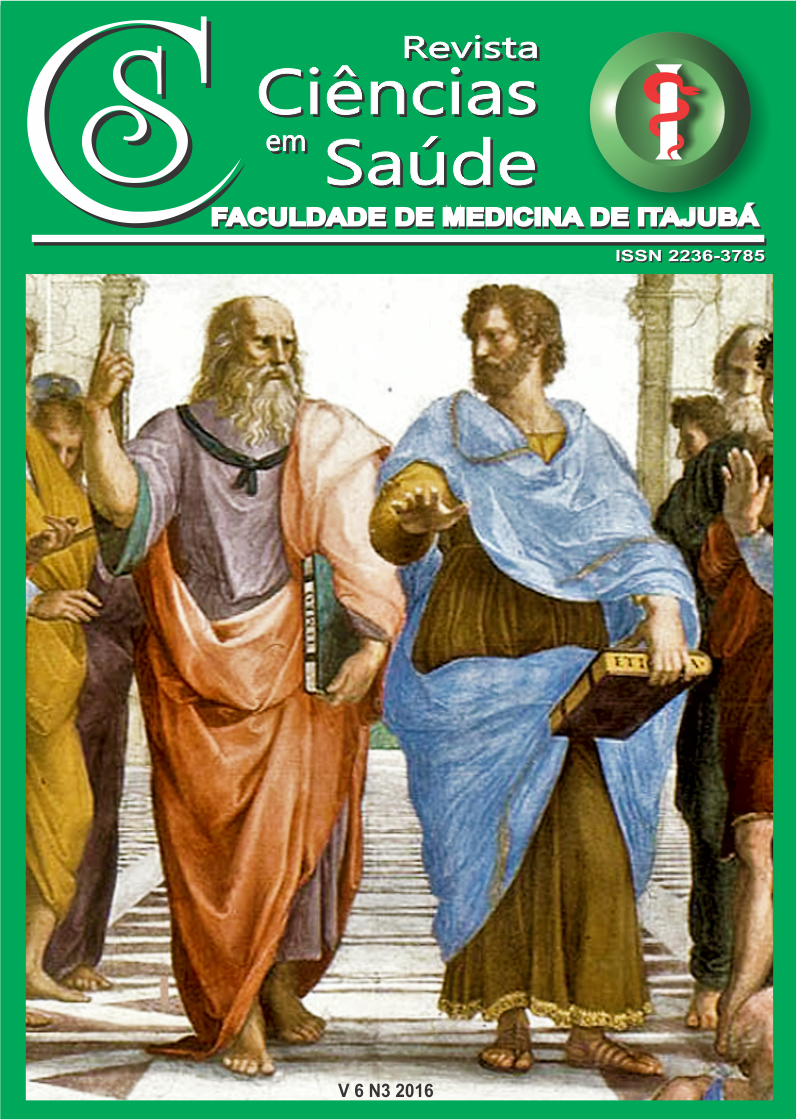Tratamento da Isquemia Mesentérica Crônica através da Angioplastia do Tronco Celíaco: Série de Casos / Treatment of Chronic Mesenteric Ischemia through Celiac Trunk Angioplasty: Case Series
Main Article Content
Abstract
Introdução: A estenose aterosclerótica das artérias viscerais pode ser responsável pela manifestação da Isquemia Mesentérica Crônica (IMC). Apesar de o Tronco Celíaco (TC) ser o vaso mais frequentemente acometido, o tratamento cirúrgico é cada vez menos utilizado. O tratamento endovascular, apesar de possuir perviedade inferior a longo prazo, tornou-se o método de escolha devido à fácil execução e baixo índice de complicações. Relato de Casos: Descreve-se quatro casos de revascularização endovascular do TC com implante de stent em pacientes com sintomas de IMC. A avaliação diagnóstica foi realizada através de angioTC helicoidal. Três casos foram realizados por meio do acesso femoral. O sucesso técnico foi de 100%, entretanto um caso necessitou de conversão para acesso braquial. Houve um caso de migração proximal do stent. Todos os pacientes apresentaram melhora subjetiva dos sintomas. Conclusão: Os métodos de imagem são fundamentais para o diagnóstico e planejamento terapêutico. O tratamento endovascular para as lesões estenóticas do TC é o método de escolha na atualidade, devido aos baixos índices de complicações e aceitável taxa de perviedade primária no curto e médio prazo. A aplicação objetiva de questionários de qualidade de vida, entretanto, é necessária para confirmar a eficácia clínica do tratamento.
Palavras-chave: Isquemia Mesentérica, Artéria Celíaca, Angiografia Digital, Implante de Prótese Vascular, Oclusão Vascular Mesentérica, Relatos de Casos
ABSTRACT
Introduction: Atherosclerotic stenosis of visceral arteries may be responsible for the manifestation of Chronic Mesenteric Ischemia (CMI). Although the Celiac Trunk (CT) is the most commonly affected vessel, surgical treatment has been less used. Endovascular treatment, despite lower long-term patency, has become the method of choice due to feasibility and low complication rates. Cases Report: Four cases of endovascular revascularization of CT with stenting are described in patients with suggestive symptoms of CMI. The diagnostic evaluation was performed using multislice CT angiography. Three cases were performed through femoral access. Technical success was 100%, however in one patient conversion to brachial access was needed. There was one case of proximal stent migration. All patients had subjective improvement of symptoms. Conclusion: Imaging methods are essential for diagnosis and treatment planning. Stenting of CT stenosis is the current method of choice, because of low complication rates of and acceptable short and mid-term primary patency. The objective application of QOL questionnaires, however, is required to confirm clinical efficacy.
Keywords: Mesenteric Ischemia, Celiac Artery, Digital Subtraction Angiography, Blood Vessel Prosthesis Implantation, Mesenteric Vascular Occlusion, Case Reports
Article Details
Authors maintain copyright and grant the HSJ the right to first publication. From 2024, the publications wiil be licensed under Attribution 4.0 International 
 , allowing their sharing, recognizing the authorship and initial publication in this journal.
, allowing their sharing, recognizing the authorship and initial publication in this journal.
Authors are authorized to assume additional contracts separately for the non-exclusive distribution of the version of the work published in this journal (e.g., publishing in an institutional repository or as a book chapter), with acknowledgment of authorship and initial publication in this journal.
Authors are encouraged to publish and distribute their work online (e.g., in institutional repositories or on their personal page) at any point after the editorial process.
Also, the AUTHOR is informed and consents that the HSJ can incorporate his article into existing or future scientific databases and indexers, under the conditions defined by the latter at all times, which will involve, at least, the possibility that the holders of these databases can perform the following actions on the article.

